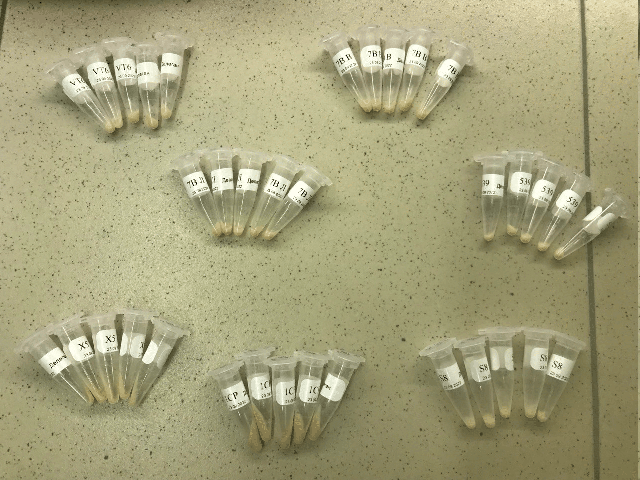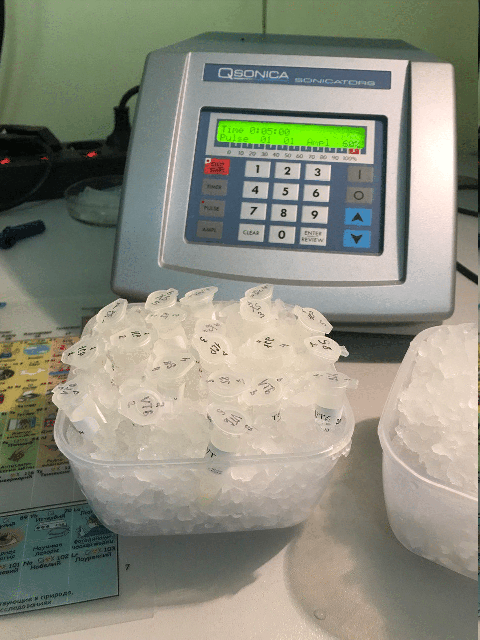Microbiologists have developed a method to assess the species composition and activity of bacteria in just seven minutes.
The results of the study, supported by a grant from the Russian Science Foundation (RSF), have been published in the Microchemical Journal. Microbes play a crucial role in our lives. They reside in our bodies, on our skin, and around us, forming complex communities that impact our health and the environment. Studying these microscopic ecosystems is a challenging task, as microbes are incredibly diverse, and their activity varies depending on environmental conditions.
Currently, scientists can assess microbial activity using several mass spectrometry methods, which require a considerable amount of time and effort. For instance, through bottom-up proteomic analysis based on tandem mass spectrometry, researchers analyze samples of bacterial proteins, which must first be "cut" into small peptides using enzymes, and in the case of mass spectrometry, further fragmented.

Another method, based on time-of-flight mass spectrometry, while allowing for rapid identification of the microbial species present in a sample, provides no information about the state of these microbes: their activity, metabolism, and so on. Therefore, new tools are needed that can not only quickly identify microorganisms but also assess their functional activity. This is crucial for combating diseases, protecting the environment, and developing new biomedical technologies.
Scientists from the N.N. Semenov Federal Research Center for Chemical Physics of the Russian Academy of Sciences (Moscow) have collaborated with colleagues to develop a new method called DirectMS1, which allows for the rapid assessment of both the species composition and functional activity of microorganisms and their communities. The authors simplified and significantly accelerated data collection, eliminating protein fragmentation and reducing the hour-long experiment to just seven minutes.
The researchers tested the method on isolated populations of microorganisms, model microbial communities with known compositions, and available experimental data on the human gut microbiota. In this approach, experimental data—protein sequences of bacteria in the sample—were matched against a database of known bacterial proteins. To reduce analysis time, scientists divided the process of bacterial species identification into two stages: first, they conducted a preliminary search, thereby narrowing the database down to the most likely bacteria, and then used it for precise species identification.
The researchers evaluated the effectiveness of this two-step approach. To do this, they analyzed the proteins of 19 previously known bacterial strains using the developed method. It turned out that the two-stage algorithm identifies microbial species with an accuracy of 95 percent.
Additionally, the authors assessed whether the two-step search could distinguish different microorganisms in a mixture of soil bacteria. In this case, the accuracy of the method in determining the genus was 88 percent.

The proposed approach also enabled the description of metabolic changes in bacteria that occur under the influence of their habitat. For example, the scientists examined how the biochemical activity of two species of actinobacteria from the genus Rhodococcus, known for breaking down aromatic hydrocarbons and thus promising for the disposal of toxic waste from the oil refining industry, changes. In the presence of harmful substances, the bacteria actively synthesized a set of enzyme proteins involved in their degradation. The quantity of such compounds can be used to quickly assess the effectiveness and viability of the studied bacteria.
“Our approach allows for rapid and informative analysis of individual microorganisms and microbial communities. This technology can be applied to any bacteria and fungi. It will simplify the assessment of microbial activity, including pathogenic ones, as well as the determination of the composition and functional state of the microbiota for clinical diagnostics and environmental monitoring. Currently, together with colleagues from Skoltech, MIPT, and IOGEN RAS, we are testing our method on microbial communities from soil, the gut microbiota of agricultural birds, and animal models of Parkinson's disease.
We are confident that we will soon be able to provide microbiologists with a ready technological solution that will significantly accelerate the functional analysis of microbiota and enhance its accessibility,” says project participant, supported by an RSF grant, Irina Tarasova, PhD in Physics and Mathematics, leading researcher at the N.N. Semenov Federal Research Center for Chemical Physics of the Russian Academy of Sciences.
Researchers from the Puschino Scientific Center for Biological Research of the Russian Academy of Sciences (Pushchino), Belgorod State National Research University (Belgorod), and University of Southern Denmark (Denmark) also participated in the study.